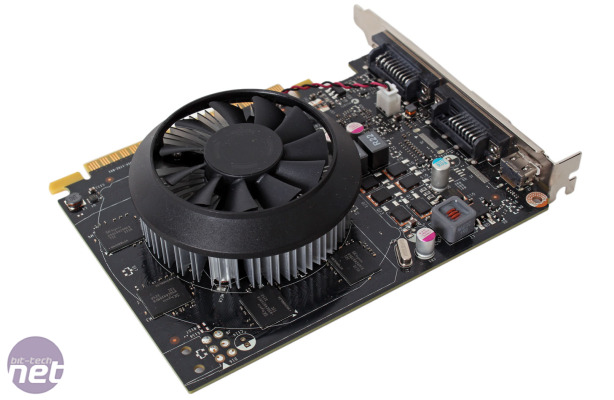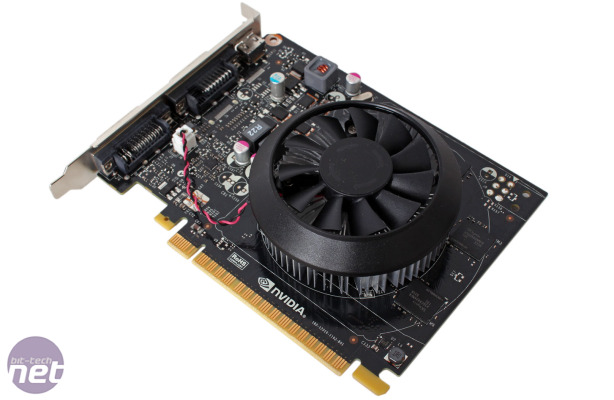
Performance Analysis
In our Battlfield 4 Ultra detail test, the GTX 750 Ti minimum of 22fps is a marked improvement over the GTX 650 Ti and also very close in performance to the GTX 650 Ti Boost, a card with more cores, texture units and ROPs and significantly higher memory bandwidth. Still, the 4x MSAA setting in the Ultra preset is too much for the Maxwell card to remain playable, but switching to High we see a much smoother minimum of 35fps. This result is the same as the older GTX 480 and almost double that of the GTX 550 Ti. However, it only just manages to beat the R7 260X on average frame rates. The R7 260X is £15 cheaper and supports Mantle, which should give it the edge in this game to those with low end CPUs (fairly likely in this market segment). Nevertheless, Battlefield 4 has always been an AMD friendly game, so the Maxwell card still stands its ground fairly well.In BioShock Infinite, the architectural improvements appear to be massively beneficial. It manages an impressive minimum of 40fps at 1,920 x 1,080, even with all the details cranked up. This result is not only 33 percent faster than the GTX 650 Ti, it even surpasses the GTX 650 Ti Boost. Looking at the older generations, it's actually faster than a GTX 480 too, and effectively twice as quick as a GTX 550 Ti. As for AMD, its R7 260X card is trumped by 8fps on the minimum and about 31 percent on average. The GTX 750 Ti still isn't able to catch up to the R9 270, however.
The GTX 750 Ti slots in below the GTX 650 Ti Boost and above the R7 260X again in Crysis 3. Even with 0x AA, however, it's not able to achieve playable frame rates on the game's Very High settings. Going one step down to High, however, results in a less stuttery 34fps minimum – a much smoother experience than the R7 260X's 28fps at the same settings. With older cards, the GTX 480 still holds an advantage, but the GTX 550 Ti is again completely outclassed (as you'd hope), as it's totally unplayable when the Maxwell card is relatively smooth.
Our tried and tested 1080p Skyrim benchmark reveals similar rankings as Crysis 3, but the R7 260X closes the gap – the two cards are effectively neck and neck, with both achieving mid-40s minimum frame rates and averages just shy of 60fps. The GTX 480 is still way ahead in this game, but the GTX 550 Ti is again slacking – its minimum is just 25fps.
In the Unigine Valley benchmark the GTX 750 Ti scores 981, while the GTX 650 Ti Boost is 13 percent ahead. Still, the Maxwell card's score is comfortably ahead of the R7 260X, and yet again almost double that of the GTX 550 Ti.
The power consumption figures confirm just how efficient the GTX 750 Ti is. The card posts the lowest idle and load figures of any card on test. It's faster than both the GTX 650 Ti and R7 260X, yet its power consumption is lower – significantly so when compared to the latter, as the difference in system power consumption is close to 50W. Meanwhile, the older hardware is exposed as horribly inefficient by today's standards, as the GTX 550 Ti causes our system to draw 57W more power yet is only about half as fast. Meanwhile, the GTX 480 comes in with a whopping 312W compared to the GTX 750 Ti's 174W – while that card is well known for its inefficiencies, it's still an interesting comparison.
In terms of thermal performance, the GTX 750 Ti is one of the coolest reference cards we've tested. The result leaves us with zero concern about the chip overheating – the cooler used is as basic as they come but even it is able to keep things controlled with minimal noise, so board partners should have no trouble doing the same with more elegant solutions. The similarly dinky cooler on the slower R7 260X, meanwhile, produces a result that's 15°C hotter.
Our overclocks allow the card to excel even more than it already does in BioShock, where its 15 percent improvement actually sees it surpass the performance of both the GTX 660 and R9 270, even though power, temperature and noise are barely affected by the additional frequencies. In Crysis 3, it improves by over 20 percent, which makes for a smoother experience using Very High settings and also has it overtake the GTX 650 Ti Boost. It doesn't quite manage this in Unigine (where the 2,560 x 1,440 resolution likely holds it back), but it still improves by 11 percent with its new frequencies.

MSI MPG Velox 100R Chassis Review
October 14 2021 | 15:04










Want to comment? Please log in.